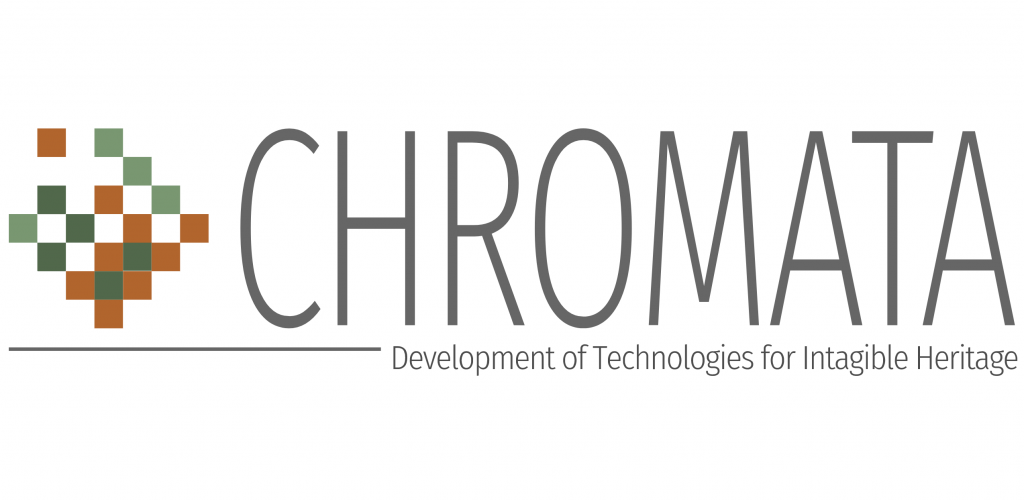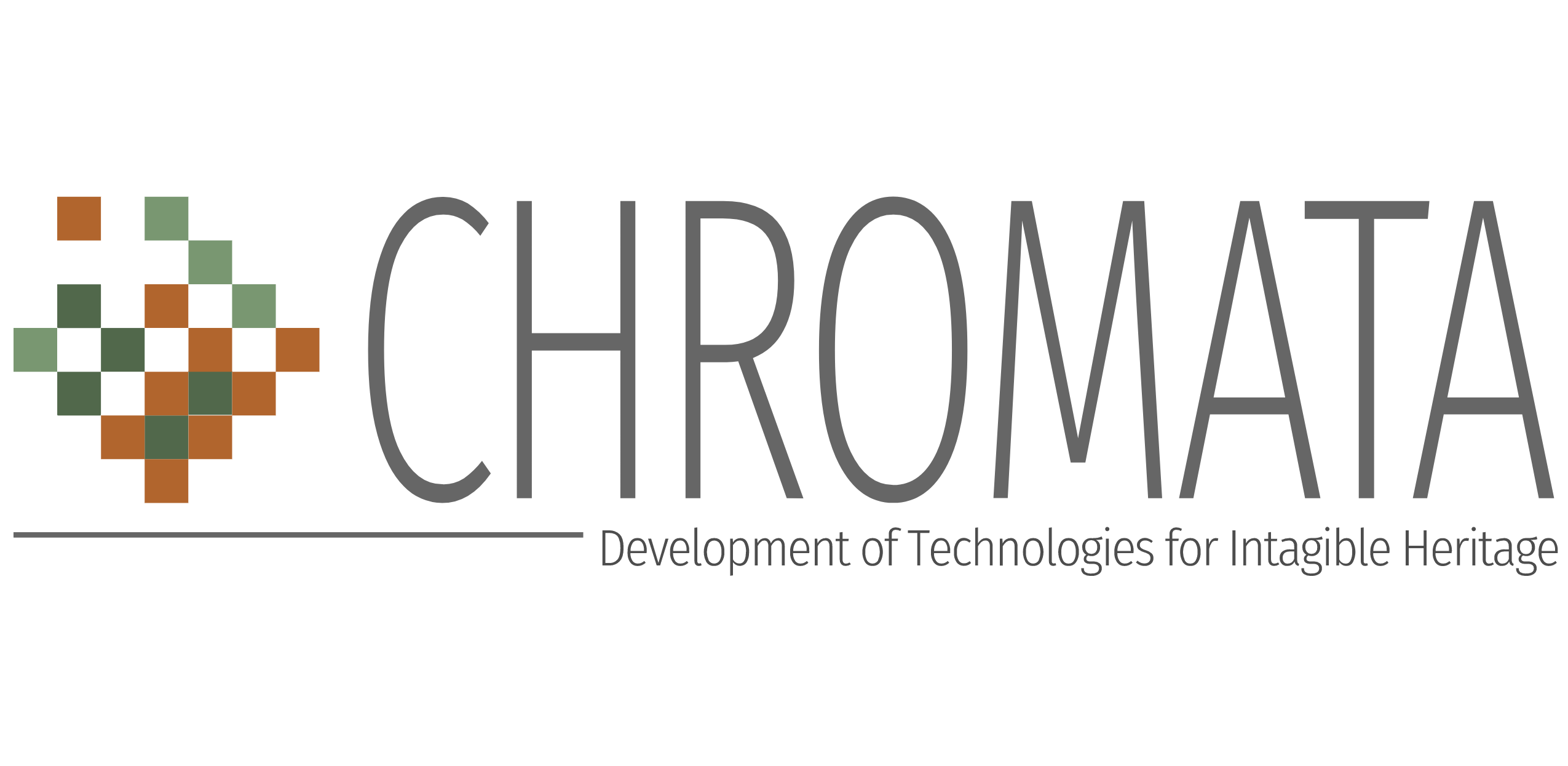
CHROMATA
Dances, Songs, Myths and Customs for the Development of Technologies for Intangible Cultural Heritage
The preservation of the intangible cultural heritage (e.g., traditional dances, songs, stories, techniques etc.) is a challenging task, since it is more difficult than maintaining tangible objects. The main purpose of the national project CHROMATA is to design and implement an interactive virtual reality platform that will gather elements of the intangible cultural heritage from available sources in areas of cultural interest and will constitute the starting point for the creation of indoor and outdoor environments of virtual and augmented reality that can
(a) revive and represent the elements (e.g., traditional dances, stories, etc.) of the intangible heritage and
- b) create new spatial and virtual transcripts, thus promoting new uses for it.
For the implementation of the platform, different sources of cultural content will be used, such as museums, folk tradition, 3D reconstructions, etc., to enrich the platform’s intangible cultural database. The database will also be enriched with additional intangible heritage content from online sources, social networks and open data through focused, real-time information extraction techniques. This data, along with data coming from site 3D reconstruction and from folk tradition activities, will be used to train technological tools that will allow for a timely and culturally coherent Virtual Reality environment. Such tools include image and video analysis techniques to understand cultural content activities (e.g., traditional dances, weaving techniques, etc.) as well as text creation and analysis tools for the transcription of intangible content in order to be used in other forms (e.g., 3D representation of songs, stories and myths). The material will be organized on the basis of its specific local, temporal and cultural parameters. The extracted information will be visualized in 3D space and will be available to users in a virtual reality environment through a flexible (agile) architecture and communication system. Both complete spatial compositions and partial spatial extracts will be produced, always keeping coherence in the designed sets with justified integration into space, place and related cultural context. The result will be the creation of a virtual reality environment that will allow the design of
(a) relevant exhibitions for the preservation of intangible cultural heritage, and
(b) new uses of the existing content.
The system will be piloted to harness the existing intangible heritage content already available to the consortium as well as new digital material to be produced and collected during the project.
M4D as a team of the Centre for Research and Technology Hellas (CERTH), Greece, coordinates the project.



